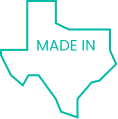On the surface, Sinch is a classic communication-platform-as-a-service (CPaaS) company. They provide services like text messaging, voice calling, email messaging, and other tools for businesses to communicate with their customers. Businesses use these tools for sales (e.g. booking meetings), marketing (e.g. sending promotional texts), and other (e.g. password resets) use cases.
The breadth of their product is remarkable: they not only cover channels like SMS and email, but also let customers message from places like WhatsApp and Instagram, call through Teams or Zoom, and send and optimize every kind of email. Their tools are accessible via API. Because of their size and product breadth, they cater well to enterprises (such as Microsoft, DHL, and Lyft) and SMB customers. They are listed on Nasdaq Stockholm with a $2b market cap.
Many large software businesses pursue organic growth strategy. They grew revenue through word-of-mouth or sales and marketing tactics. They may acquire a company or two along the way, but if they did, it was because they bought a talented team (acquihire) or to fold a solution into their product. Organic growth is how most well-known software companies became large enough that they became well-known.
Given Sinch’s size, many consider them Twilio’s most formidable competitor in communications software. The difference that I want to focus on, however, is how Sinch has bought and built their way to a market leader, in contrast to Twilio’s (mostly) organic growth.
Sinch early days
Sinch started in either 2008, 1989, or 2014, depending on the story you want to tell.
CLX Communications (CLX are the Roman numerals for 160, the maximum number of characters in a text) began in 2008 by a group of European founders that spun out of Ericsson (the large Swedish telecom company) and mBlox (what became a cloud-based mobile messaging company, eventually purchased by Sinch). There are few early interviews or reports, but later ones cite a vision for a unified communications and mobile messaging company. The launch of the iPhone in 2007 played a role. It’s also clear that M&A was a core part of their growth strategy.
CLX made its first acquisition in 2009, a year after its inception, purchasing Symsoft, a Stockholm-based company founded in 1989. Symsoft was previously a publicly traded company with strong ties to mobile network operators (MNOs) like AT&T, Verizon, and Vodafone. MNOs provide wireless voice and data communication for mobile phones. Symsoft began as a services company but developed IoT software for companies to engage with MNOs.
The company got the name “Sinch” from a 2016 acquisition. Sinch was founded in 2014 after the technology team was spun out of another product (Rebtel) with $12m in funding. Sinch realized developers wanted messaging features in their apps and built infrastructure for it. Their first product in 2014 was voice and instant messaging, and they launched an SMS API later that year. It wasn’t until 2019 that CLX Communications rebranded all their tools as Sinch, which is what it’s known as today.
Growth through small M&A
Over the next several years, Sinch grew both organically and through M&A activity. Here’s a list of their transactions from 2014 to 2021.
You can think about any market (or acquisition strategy) across various vectors: technology, use case, market segment, geography, etc. This is especially true in communications software and for the acquisitions that Sinch made during this time period. This list includes fourteen acquisitions ranging in size from $300k to $322m.
MBlox, for example, was one of their first acquisitions and was quite large at the time. MBlox and CLX were two of the top four application-to-person (ATP) messaging platforms. MBlox had a significant customer base in the US, UK, and Australia, compared to the largely European customer base of CLX.
MBlox wasn’t the only acquisition that helped CLX / Sinch grow into new geographies. Xura (Germany) and Unwire (a Danish company with customers in the Nordic and Baltic region) helped expand within Europe, while larger ones later in their lifecycle (TWW, Brazil; ACL, India and SE Asia; WAVY, Brazil) furthered their customer base internationally.
Acquisitions sometimes had a technical or product bend to them. For instance, Xura had a 30% market share in Germany but also provided the workflow (and existing customer relationships) for secure bank and aviation logins and authentications. This was a feature that CLX could roll out to other customers. Sinch also acquired Vehicle Agency in 2018 as a way to add personalized video messaging capability to their product suite and acquired Chatlayer in 2020 to add an AI-enabled chatbot service for their customers.
Finally, there are some that extend their business into new markets. For example, Sinch acquired myElefant in 2019. This is a messaging company, but they focused on marketing communications. At the time, they had tools to build mobile landing pages and use conversation to engage and assist potential customers. Their low-code platform was easy for non-technical marketing teams to design immersive marketing pages.
Building a communications powerhouse
After the series of smaller acquisitions, Sinch made headlines in 2021 with three acquisitions over a billion dollars, driven by large equity investments, including one from Softbank.
The first major acquisition was Inteliquent for $1.14b. Inteliquent was a profitable, growing communications platform. They had two main products: CPaaS for API-based voice calling and IaaS, which sold toll-free numbers and services to telecom companies.
The next major acquisition was MessageMedia for $1.3b. MessageMedia is another messaging software company, with a few attractive traits. First, it was highly profitable when Sinch purchased it. Second, it had an API-first product (competing with Twilio) that had already reached significant scale (>5 billion messages per year). And finally, it focused on SMB customers, a segment where Sinch wanted to strengthen its position.
Finally, Sinch acquired Pathwire for $1.9b. Pathwire, a Thoma Bravo company, had combined Mailgun, Mailjet and Email on Acid. The combined company was one of the largest API-based email communications providers. This added a key component for Sinch’s product, matching Twilio’s capabilities, who had recently acquired Sendgrid (a cloud-based email provider) for $2b. Pathwire was also of significant scale, having hundreds of thousands of business customers and millions of users.
Where is Sinch today?
Today Sinch trades at around a $2b market cap, well short of their peak which was north of $20b. But it’s not entirely their fault; technology broadly and communication software specifically have declined since the pandemic. Not only have interest rates risen, but market sentiment on communication software has softened. The stock charts of companies like Zoom and Twilio look similar to Sinch’s.
Another hiccup is Sinch’s financial profile. Growth has slowed, which is typical in this market, but perhaps more concerning is their 35% gross margins due to infrastructure costs. While most software companies only pay for hosting (and might allocate some customer support into COGS), communications software companies, especially those using SMS and voice messaging, have to pay mobile network operators and other infrastructure providers. They can pass the costs to customers to a degree, but it’s expensive nonetheless. It’s a hurdle for the industry.
While Sinch has slowed down their acquisition spree (due to less funding and lower stock prices), it’s still a good case study in building a large software company through acquisitions. They bought companies that helped with geographic expansion and new product capabilities, and they built a worthy competitor to Twilio. Others can learn from it and execute a similar playbook, perhaps in a more economically favorable industry.

